As a coffee lover, I understand the importance of having the right mug to enjoy my morning cup of joe. But have you ever wondered if your coffee mug is oven safe?
It’s a question that many people ask, and the answer is not always straightforward.
In this article, I will explore the topic of coffee mugs and oven safety, providing you with the information you need to make an informed decision.
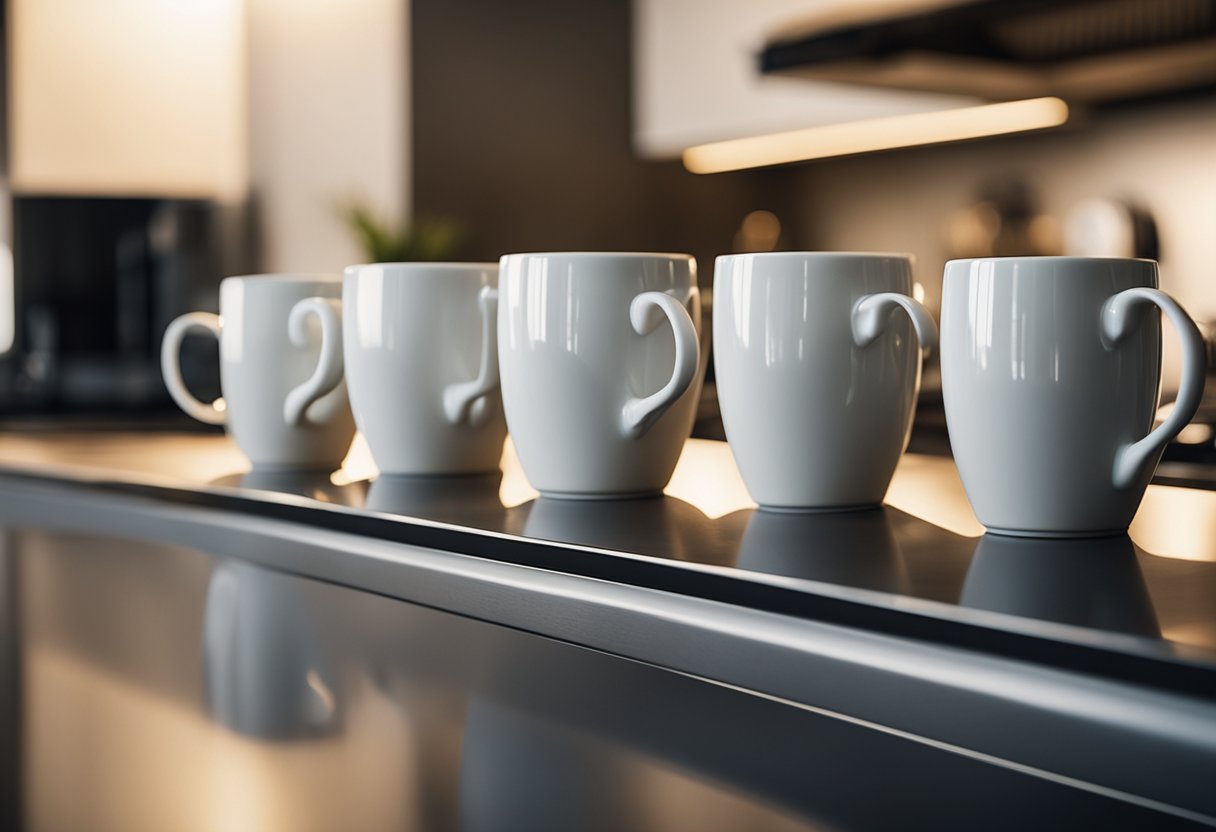
When it comes to coffee mugs, there are a variety of materials that they can be made from, including stoneware, porcelain, glass, and ceramic.
Each material has its own unique properties that affect its ability to withstand high temperatures.
Understanding the materials your mug is made from is an essential first step in determining whether it is oven safe or not.
While some coffee mugs are labeled as oven safe, not all mugs are created equal.
Factors such as the temperature of the oven, the type of material the mug is made from, and the manufacturing process can all impact the mug’s ability to withstand the heat.
Additionally, there are potential risks associated with using coffee mugs in the oven, such as cracking or shattering. In the following sections, we will explore these considerations in more detail.
Key Takeaways
- Understanding the materials your coffee mug is made from is an essential first step in determining whether it is oven safe or not.
- Not all coffee mugs are created equal, and factors such as the temperature of the oven, the type of material the mug is made from, and the manufacturing process can all impact the mug’s ability to withstand the heat.
- Using coffee mugs in the oven can pose potential risks, such as cracking or shattering, so it’s important to follow manufacturer guidelines and labeling, and consider alternatives such as using a different dish for oven use.
Understanding Coffee Mugs Materials
When it comes to determining if a coffee mug is oven safe, it’s important to understand the different materials that mugs are made from. Here is a breakdown of the most common materials used in coffee mugs:
Ceramic Mugs
Ceramic mugs are the most commonly used type of coffee mug. They are made from clay and then fired at high temperatures.
Ceramic mugs are generally safe to use in the oven, but it’s important to check the manufacturer’s instructions to ensure that they are oven safe.
Plastic Mugs
Plastic mugs are not oven safe. They can melt or release harmful chemicals when exposed to high temperatures. It’s best to avoid using plastic mugs in the oven.
Stoneware Mugs
Stoneware mugs are made from clay that has been fired at high temperatures. They are generally safe to use in the oven, but it’s important to check the manufacturer’s instructions to ensure that they are oven safe.
Porcelain Mugs
Porcelain mugs are made from a mixture of clay and other materials that are fired at high temperatures.
They are generally safe to use in the oven, but it’s important to check the manufacturer’s instructions to ensure that they are oven safe.
Metal Mugs
Metal mugs, such as stainless steel or aluminum, are generally not oven safe. They can get too hot to handle and may cause burns. It’s best to avoid using metal mugs in the oven.
Glass Mugs
Glass mugs are generally safe to use in the oven, but it’s important to check the manufacturer’s instructions to ensure that they are oven safe.
It’s also important to note that not all glass mugs are created equal, and some may be more prone to breaking or shattering in the oven.
Earthenware Mugs
Earthenware mugs are made from clay that has not been fired at high temperatures. They are generally not oven safe, as they can crack or break when exposed to high temperatures.
In summary, when determining if a coffee mug is oven safe, it’s important to consider the material that the mug is made from.
Ceramic, stoneware, porcelain, and glass mugs are generally safe to use in the oven, but it’s important to check the manufacturer’s instructions to ensure that they are oven safe.
Plastic and metal mugs should be avoided in the oven, and earthenware mugs may not be oven safe.
Oven Safe Considerations
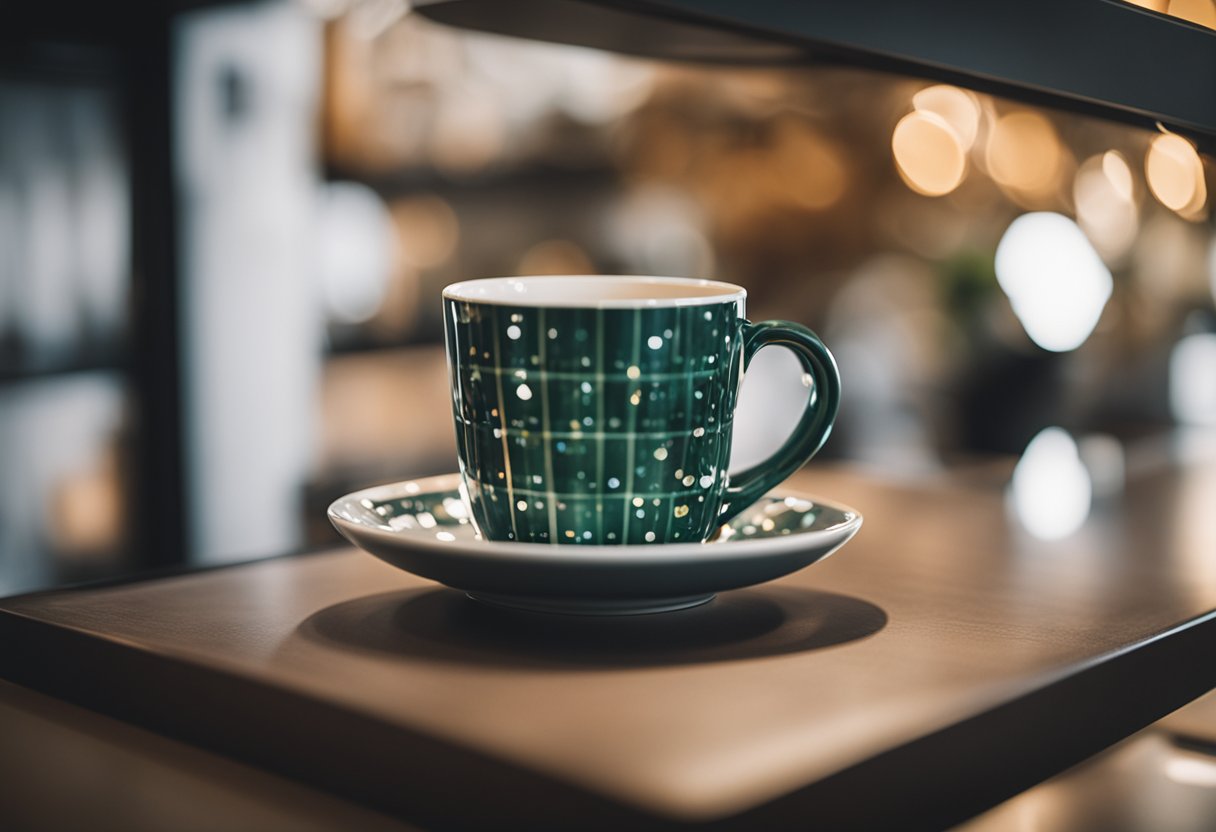
As a coffee lover, I understand the importance of finding the perfect mug for my daily brew. However, when it comes to using mugs in the oven, there are some important considerations to keep in mind.
In this section, I will discuss the factors to consider when determining if a coffee mug is oven safe.
Temperature Factors
One of the most important factors to consider when using a coffee mug in the oven is the temperature.
Not all mugs are designed to withstand high temperatures, and using a mug that is not oven safe can result in thermal shock, which can cause the mug to crack or even shatter.
It is important to check the manufacturer’s recommendations to ensure that the mug is safe to use in the oven.
Additionally, it is important to note the maximum temperature that the mug can withstand.
Most oven-safe mugs are made from materials such as stoneware, porcelain, or certain types of glass that are designed to resist high heat.
Material Factors
The material of the mug is also an important factor to consider when determining if it is oven safe. As mentioned earlier, stoneware, porcelain, and certain types of glass are generally safe to use in the oven. However, not all materials are created equal.
For example, some ceramic mugs may not be suitable for use in the oven due to the glaze used on the surface.
Additionally, metal mugs may not be suitable for use in the oven due to the risk of fire. It is important to check the manufacturer’s recommendations and ensure that the material is suitable for use in the oven.
In conclusion, when determining if a coffee mug is oven safe, it is important to consider both the temperature and material factors.
Always check the manufacturer’s recommendations and ensure that the mug is suitable for use in the oven to avoid any potential risks such as thermal shock or fire.
Potential Risks of Oven Use
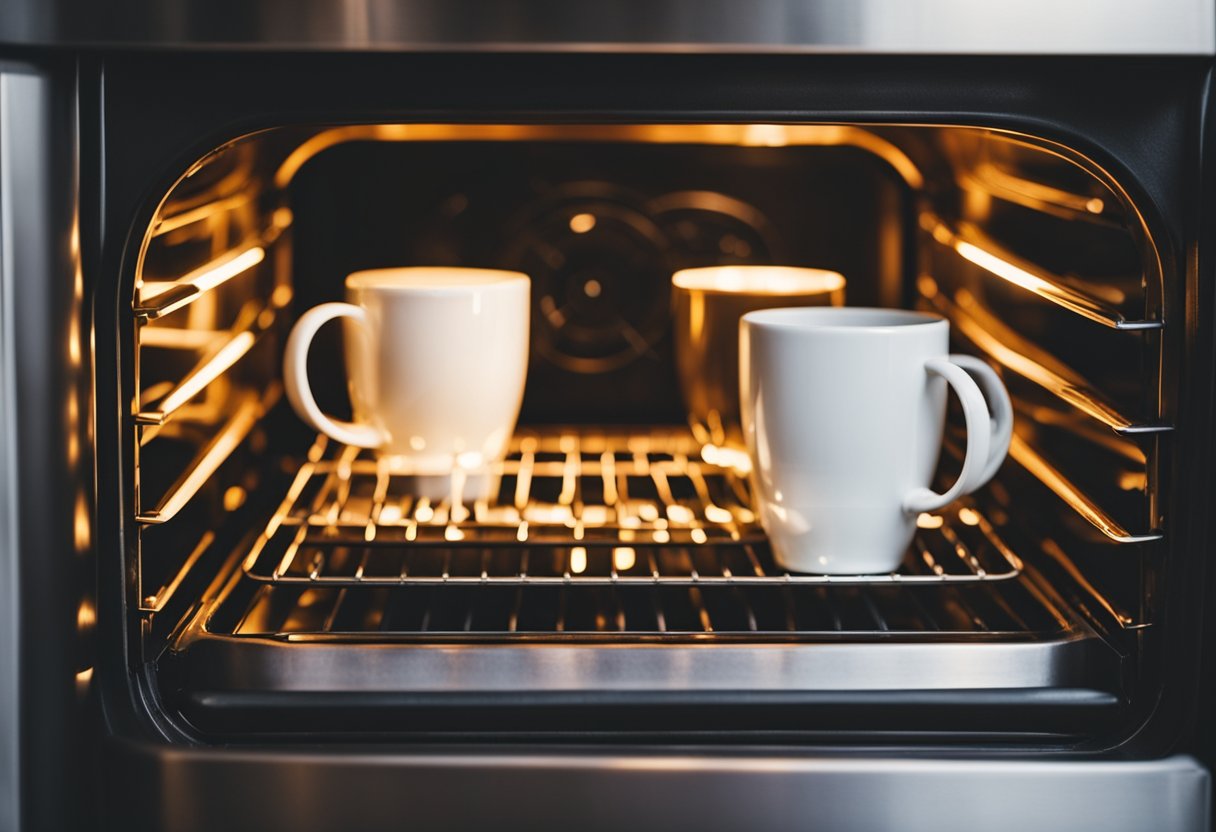
As with any kitchen item, there are potential risks associated with using coffee mugs in the oven. Here are a few things to keep in mind:
Cracking and Chipping
One of the biggest risks of using a coffee mug in the oven is the potential for cracking or chipping. This can happen if the mug is not designed to withstand high temperatures, or if it is heated too quickly.
It’s important to check the manufacturer’s instructions to see if the mug is oven-safe, and to follow any recommended temperature guidelines.
If a mug does crack or chip in the oven, it should be discarded immediately. Not only can it be a safety hazard, but it can also contaminate your food with small pieces of broken ceramic.
Decoration Damage
Another potential risk of using a coffee mug in the oven is damage to any decorative elements. If a mug is decorated with paint or decals, for example, the heat of the oven can cause these elements to melt or discolor.
To avoid this, it’s important to check the manufacturer’s instructions to see if the mug is safe for oven use with decorations intact.
If the mug is not labeled as oven-safe with decorations, it’s best to avoid using it in the oven altogether.
In summary, while coffee mugs can be used in the oven, it’s important to be aware of the potential risks.
Checking the manufacturer’s instructions and following recommended temperature guidelines can help prevent cracking and chipping, while avoiding using decorated mugs in the oven can help prevent damage to decorative elements.
Manufacturer Guidelines and Labeling
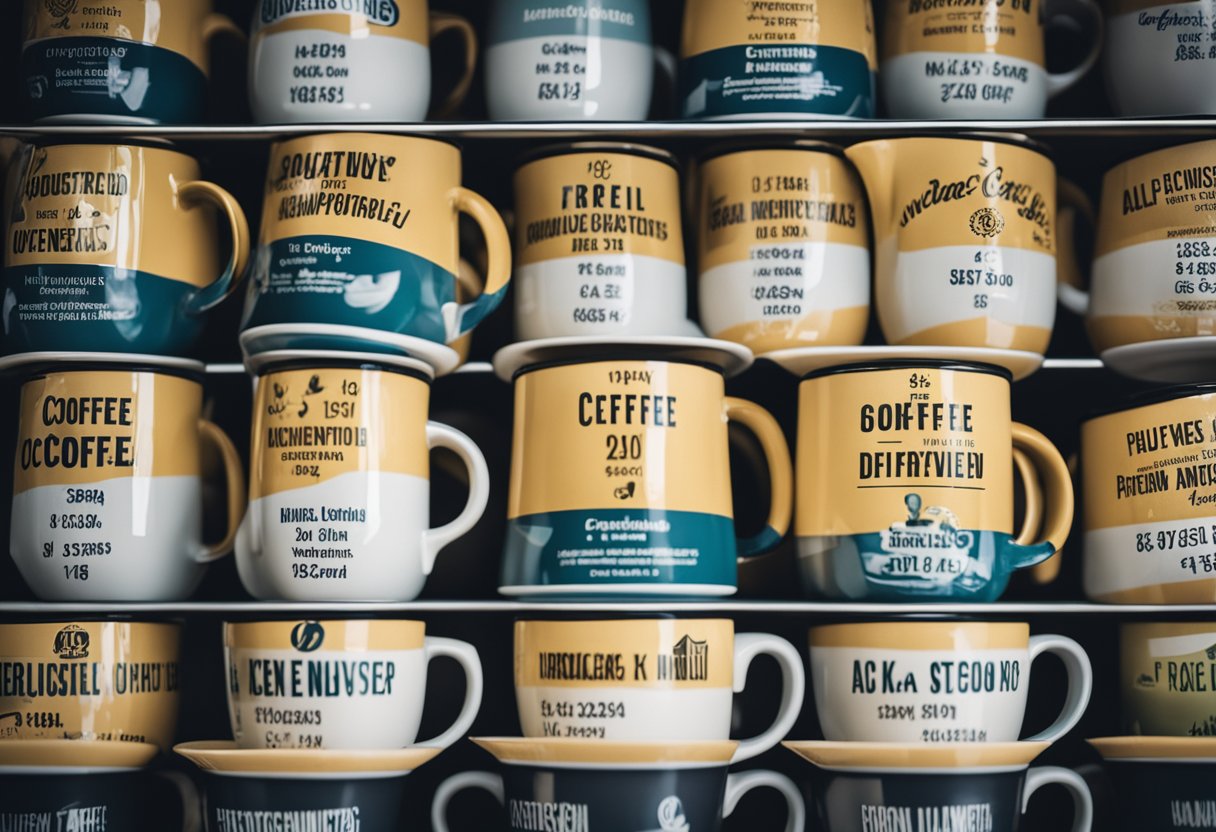
As a coffee lover, I always want to make sure that my coffee mug is safe to use in different heating methods, including the oven.
The good news is that most coffee mugs are oven-safe, but it’s important to check the manufacturer’s guidelines and labeling to ensure that you don’t damage your mug or cause any harm to yourself.
One way to determine if your coffee mug is oven-safe is to check the label for “microwave-safe” or “oven-proof” marks.
These are typically found on the bottom of the mug. If the mug is marked, then it can be heated in either an oven or microwave safely.
However, if there is no label or marking, it’s best to assume that the mug is not oven-safe.
It’s also important to consider the material of the mug. Ceramic mugs are usually oven-safe, while plastic or glass mugs may not be.
However, it’s important to note that not all ceramic mugs are oven-safe, so it’s still important to check the manufacturer’s recommendations.
When it comes to manufacturer recommendations, it’s always best to follow them to ensure that your coffee mug is safe to use in the oven.
For example, stoneware, porcelain, and certain types of glass mugs are considered oven-safe, but it’s important to be aware of risks such as thermal shock and cracking, and follow temperature limitations to avoid damage or potential harm.
In some cases, a stamp may be present on the mug indicating that it is oven-safe.
However, it’s important to note that not all oven-safe mugs may have a stamp, so it’s still important to check the manufacturer’s guidelines and labeling.
Microwave and Dishwasher Safety
As a coffee lover, I always wonder if my coffee mug is safe to use in the microwave or dishwasher. It is important to know whether a coffee mug is microwave-safe or dishwasher safe before using it in those appliances.
According to TheCommonsCafe, most coffee mugs are dishwasher-safe, which is a great convenience. However, not all coffee mugs are microwave-safe.
It is important to check the symbols on the mug before using it in the microwave. The symbol for microwave-safe products is a square with waves inside.
It is also important to note that just because a coffee mug is microwave-safe does not mean it is oven-safe.
According to Hunker, microwave-safe plastic dishes and containers have been tested and are safe for use in microwave ovens. However, the plastic in these containers is not intended to be used under high heat for long periods of time.
If these containers or dishes are subjected to such conditions – the kind found in a conventional oven – they can melt.
It is best to avoid putting any type of plastic mug in the oven. Metal mugs, such as stainless steel or aluminum, are usually oven-safe up to certain temperature levels.
Ceramic and glass mugs are generally oven-safe, but it is important to check the manufacturer’s instructions before using them in the oven.
In summary, it is important to check the symbols on a coffee mug before using it in the microwave or dishwasher.
Not all coffee mugs are microwave-safe or dishwasher safe. It is also important to note that microwave-safe does not necessarily mean oven-safe.
Metal, ceramic, and glass mugs are generally oven-safe, but it is important to check the manufacturer’s instructions before using them in the oven.
Special Cases
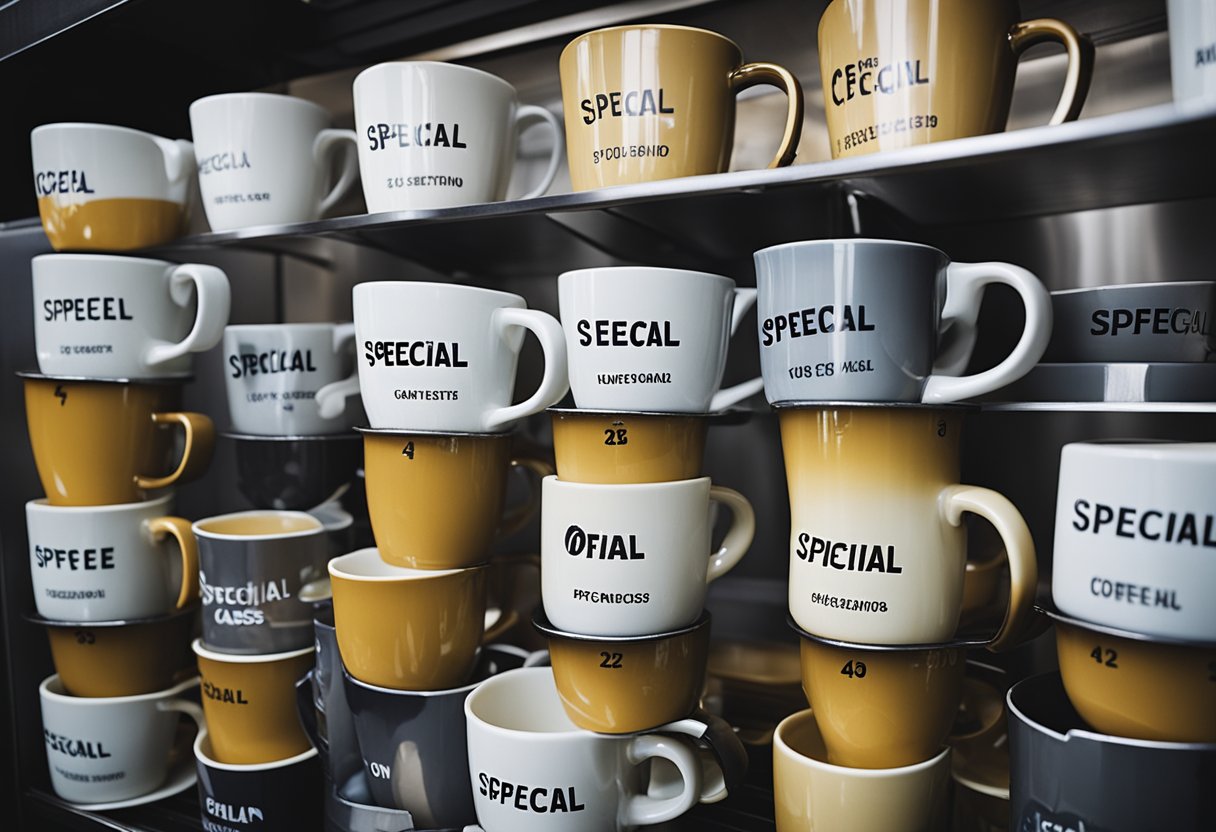
Sometimes, you may come across special cases when it comes to oven-safe coffee mugs. Here are a few examples:
Mug Cakes
Mug cakes have become increasingly popular in recent years. These single-serving cakes are made by mixing ingredients in a coffee mug and microwaving them for a few minutes.
However, some people prefer to bake their mug cakes in the oven. If you plan on doing so, it is important to make sure your coffee mug is oven safe.
Most ceramic mugs are oven safe, but it is still important to check the manufacturer’s instructions to be sure.
If you are unsure whether your mug is oven safe, it is best to err on the side of caution and use a different container.
Enamel Mugs
Enamel mugs are a popular choice for camping and outdoor activities. These mugs are made by coating metal with enamel, which makes them durable and resistant to chipping.
However, enamel mugs are not always oven safe.
If you plan on using an enamel mug in the oven, make sure it is labeled as oven safe. Enamel mugs that are not oven safe can crack or even shatter when exposed to high temperatures.
Bone China Mugs
Bone china is a type of porcelain that is made from bone ash, feldspar, and kaolin. Bone china mugs are known for their delicate and translucent appearance. However, bone china mugs are not always oven safe.
If you plan on using a bone china mug in the oven, make sure it is labeled as oven safe. Bone china mugs that are not oven safe can crack or even shatter when exposed to high temperatures.
In conclusion, it is important to make sure your coffee mug is oven safe before using it in the oven. Most ceramic mugs are oven safe, but it is still important to check the manufacturer’s instructions to be sure.
If you plan on using a mug that is not labeled as oven safe, it is best to err on the side of caution and use a different container.
Alternatives and Other Considerations
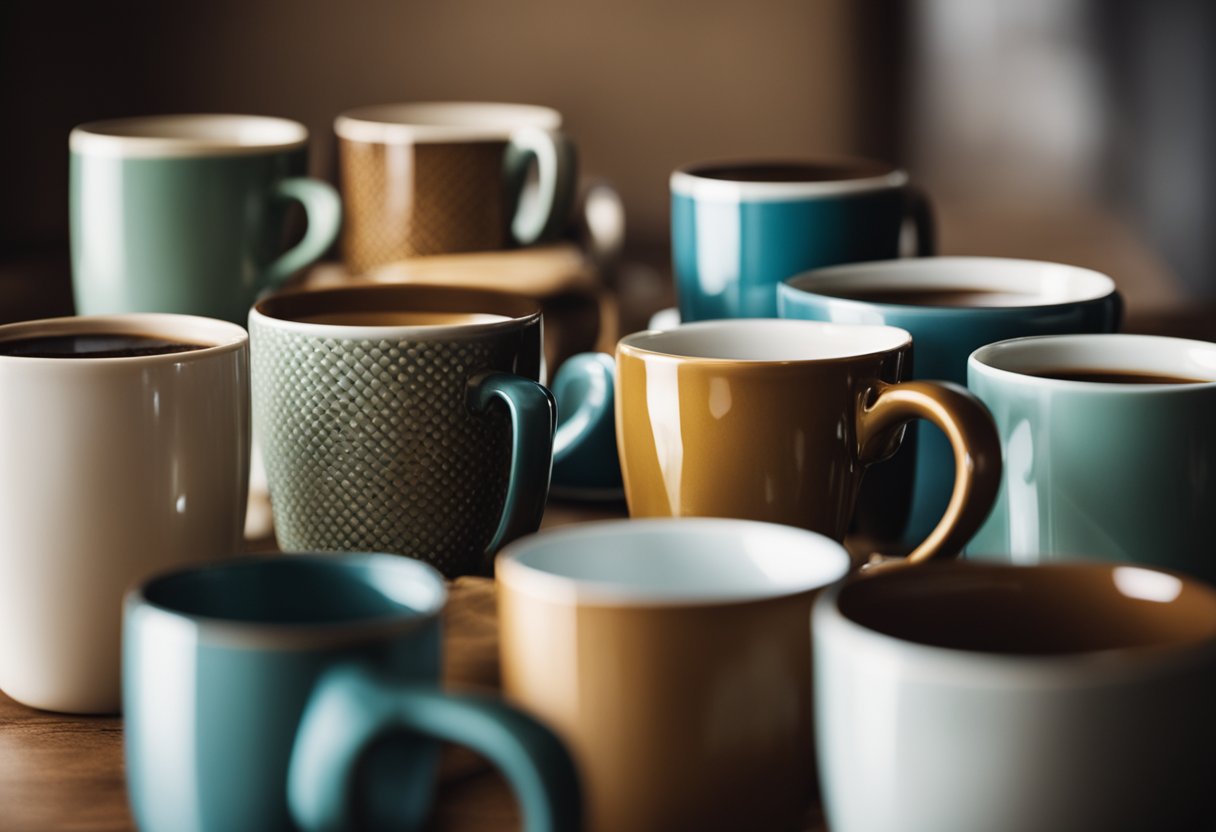
When it comes to mugs that are not labeled as oven-safe, there are a few alternatives to consider. One option is to use a different container that is safe for oven use, such as a small baking dish or ramekin.
These can be used to heat up drinks or small portions of food, and are typically made from materials that are safe for use in the oven.
Another consideration is to use a mug made from a different material that is safe for oven use. For example, some wooden mugs can be used in the oven, as can some pewter mugs.
Fine china mugs may also be safe for use in the oven, but it is important to check the manufacturer’s instructions before attempting to use them in this way.
Tempered glass and Pyrex mugs are generally safe for use in the oven, as are CorningWare mugs. These materials are designed to withstand high temperatures and are often used in baking dishes and other cookware.
Plastic mugs should generally be avoided when it comes to oven use, as they can melt or release harmful chemicals when exposed to high temperatures.
Low-quality mugs may also be unsafe for use in the oven, as they may crack or break under the heat.
It is important to note that not all mugs are created equal when it comes to insulation. Some mugs are designed to keep drinks hot for longer periods of time, while others are not.
If you are using a mug in the oven, it is important to consider how well it will insulate your drink or food.
When using mugs in the oven, it is also important to consider the oven rack.
Placing a mug directly on the oven rack can cause it to tip over or spill, so it is recommended to use a baking sheet or other flat surface to prevent this from happening.
Finally, it is worth noting that some mugs may be better suited for crafts or the catering industry rather than for use in the oven.
These mugs may be made from materials that are not safe for oven use, or may have designs or decorations that could be damaged by high temperatures.
As always, it is important to check the manufacturer’s instructions before attempting to use any mug in the oven.
Frequently Asked Questions
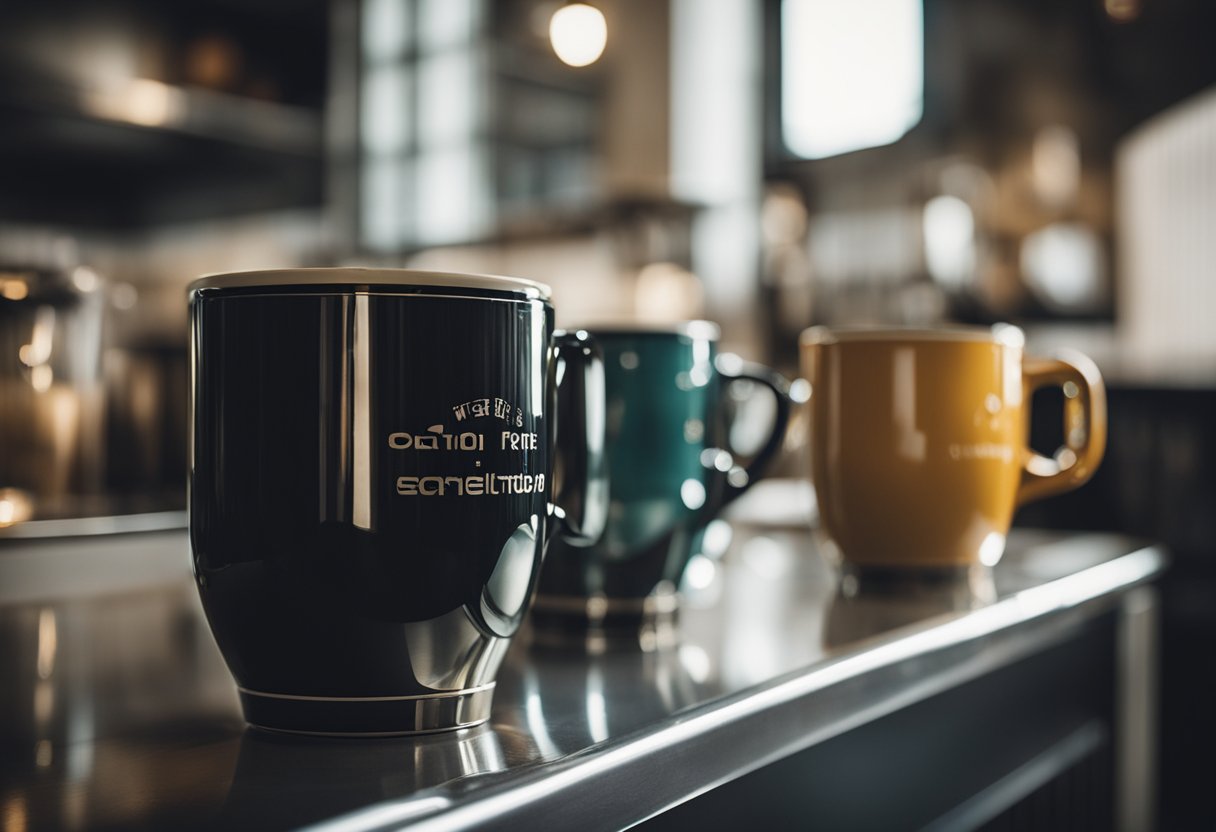
Are ceramic coffee mugs safe to use in the oven?
Ceramic coffee mugs are generally safe to use in the oven as long as they are labeled as “oven-safe.”
However, it’s important to note that not all ceramic mugs are created equal, and some may crack or break when exposed to sudden changes in temperature.
It’s always best to check the manufacturer’s instructions before using a ceramic mug in the oven.
Can porcelain mugs withstand oven temperatures?
Porcelain mugs are typically safe to use in the oven, but only if they are labeled as “oven-safe.”
Like ceramic mugs, porcelain mugs may crack or break if exposed to sudden changes in temperature, so it’s important to follow the manufacturer’s instructions carefully.
Is it safe to put Royal Norfolk mugs in the oven?
Royal Norfolk mugs are typically made of ceramic or porcelain and may be safe to use in the oven if they are labeled as “oven-safe.”
However, it’s important to check the manufacturer’s instructions before using these mugs in the oven to avoid cracking or breaking.
Are IKEA mugs oven safe?
IKEA mugs may be safe to use in the oven, but it’s important to check the manufacturer’s instructions before using them.
Some IKEA mugs are made of ceramic or porcelain and may be labeled as “oven-safe,” while others may not be suitable for use in the oven.
Can glass mugs be used in the oven?
Glass mugs are generally not safe to use in the oven, as they may shatter or break when exposed to high temperatures.
It’s best to use glassware that is specifically designed for use in the oven, such as Pyrex or other oven-safe glassware.
Are stoneware mugs suitable for oven use?
Stoneware mugs are typically safe to use in the oven, as long as they are labeled as “oven-safe.”
Stoneware is a type of ceramic that is fired at a higher temperature, making it more durable and resistant to cracking or breaking when exposed to sudden changes in temperature.
However, it’s always best to check the manufacturer’s instructions before using a stoneware mug in the oven.






